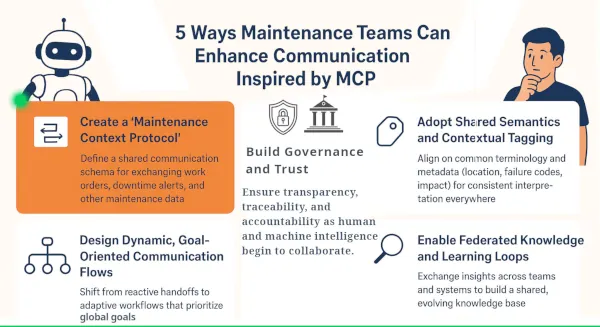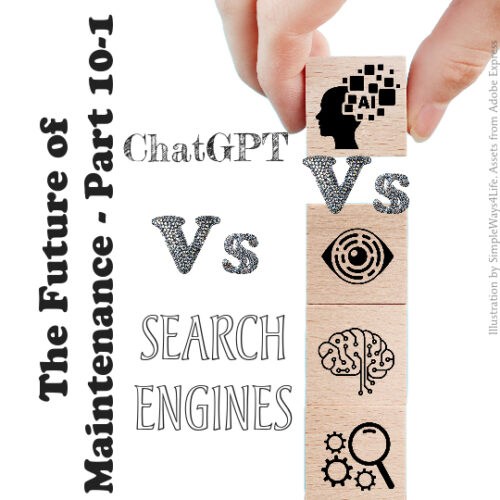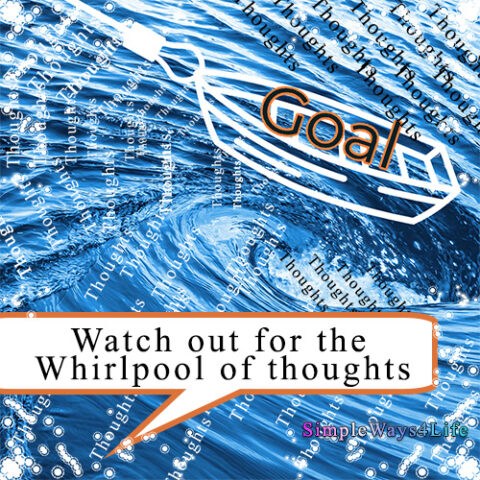
5 Ways to Enhance Maintenance Team Communication with Model Context Protocol
In the world of industrial maintenance, communication isn’t just about messages — it’s about meaning. Every message, from a technician’s note in the CMMS to a planner’s scheduling update, depends on how well information moves across teams and how accurately it carries its context. Yet in many organizations, maintenance still speaks in fragments: one language for operations, another for procurement, and yet another for reliability. These silos don’t just slow down workflows — they erode situational awareness, causing missed signals and reactive decisions.
Meanwhile, in the world of artificial intelligence, a similar challenge has been unfolding — and being solved at remarkable speed. The emergence of the Model Context Protocol (MCP) has given AI agents a standardized way to share context, understand intent, and collaborate across different tools and data environments. In essence, MCP is teaching machines how to talk — not just exchange data, but align on purpose.
Riding the Wave of Rapid Tech Advancement
The pace of digital evolution is accelerating faster than ever. MCP itself is only months old, yet it has already sparked a wave of experimentation in how AI systems cooperate across models, data sources, and organizations. This speed of innovation doesn’t have to leave maintenance behind; it can pull maintenance forward — if we act now.
By adopting the principles of structured communication, contextual awareness, and federated learning, maintenance can leapfrog from reactive routines to proactive, intelligent, and agentic operations.
The opportunity is clear: maintenance doesn’t need to wait for technology to trickle down — it can lead.
And by learning from how AI agents communicate through MCP, we can redesign how our own teams talk, decide, and collaborate — turning maintenance into one of the most adaptive, intelligent, and forward-moving functions in the modern enterprise.
For maintenance leaders, there’s a powerful parallel here. Just as AI agents are learning to communicate through shared protocols, maintenance teams can elevate their own collaboration by adopting structured, contextual, and interoperable ways of working. Consequently The principles that make MCP effective in the digital realm can just as effectively enhance maintenance teams communication
In this article, we’ll explore five practical ways maintenance teams can improve cross-silo communication by drawing inspiration from MCP. This will turn fragmented information into shared intelligence, and routine coordination into adaptive orchestration.
And if you’ve been following our earlier discussions — on how Agentic AI frameworks [1] are transforming decision-making, and how Maintenance Cloud Operations[2] are reshaping visibility and integration — this piece completes the triangle. It focuses on the human layer: how communication itself becomes the protocol that connects people, systems, and intelligent agents into one cohesive ecosystem…. you can read the complete article here: https://maintenanceworld.com/2025/11/06/5-ways-to-enhance-maintenance-team-communication-with-model-context-protocol-mca/
Conclusion: From Framework to Action — Pulling Maintenance Forward with MCP Principles
The five ideas explored here — building a Maintenance Context Protocol, adopting shared semantics, designing dynamic flows, enabling federated knowledge, and establishing governance and trust — aren’t just concepts borrowed from AI. They are actionable steps maintenance teams can start applying today to evolve their communication and collaboration practices.
- Create a Maintenance Context Protocol. Define how teams exchange data and context just as MCP defines how agents share state and meaning.
- Adopt Shared Semantics and Tagging. Align on terms, taxonomies, and metadata so every alert or work order carries clear, structured intent.
- Design Dynamic Communication Flows. Replace linear reporting chains with adaptive, goal-driven coordination that evolves in real time.
- Enable Federated Knowledge. Let each domain — operations, reliability, procurement — contribute to and learn from a shared, distributed context.
- Build Governance and Trust. Ensure transparency, traceability, and accountability as human and machine intelligence begin to collaborate.
These steps form a bridge between today’s fragmented maintenance communication and tomorrow’s agentic, context-aware ecosystem. The rise of MCP shows that interoperability and understanding between agents can scale intelligence — and the same is true for people and systems in maintenance.







